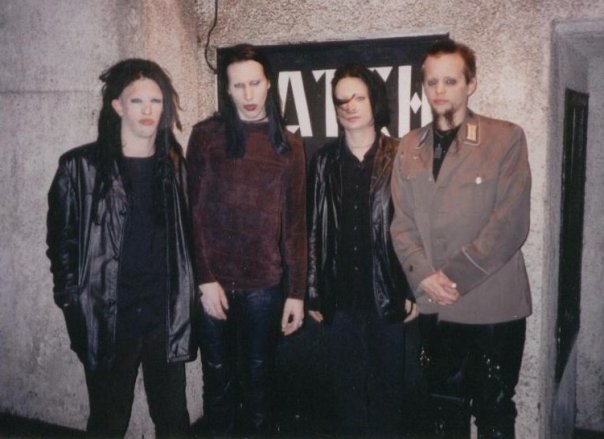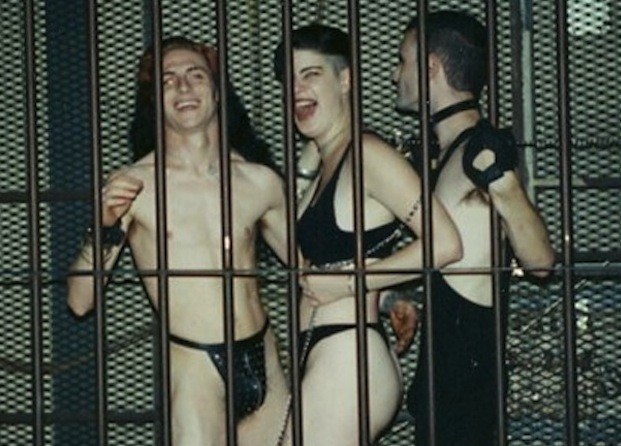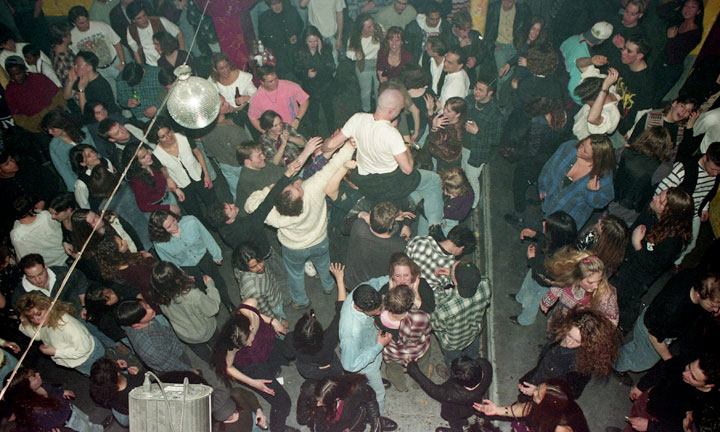Marilyn Manson outside of Catch 22, circa mid-1990s. Photo courtesy of Andy Gfy.
Article originally published by The Grid online (The GridTO.com) on May 24, 2012.
In the early ‘90s, alternative rock was exploding overground, with the rave scene coming up right behind it. This beloved Adelaide Street club bridged these two movements together in a legitimate, licensed space.
BY: DENISE BENSON
Club: Catch 22 Niteclub, 379 Adelaide W.
Years in operation: 1989-1997
History: While a five-year-lifespan tends to be a decent run for nightclubs in this city, some strike a nerve and manage to go it longer, thanks to an ever-evolving community of supporters. Catch 22 was such a venue.
Located on Adelaide near the corner of Spadina, Catch was slightly off the beaten path as it lay on the edges of the then-developing club district and was a few minutes’ walk south from Queen West. It was opened in November of 1989 by a group of friends—with Pat Violo, Lex van Erem, and Gio Cristiano at the core—in a former storage space on the building’s lowest level.




